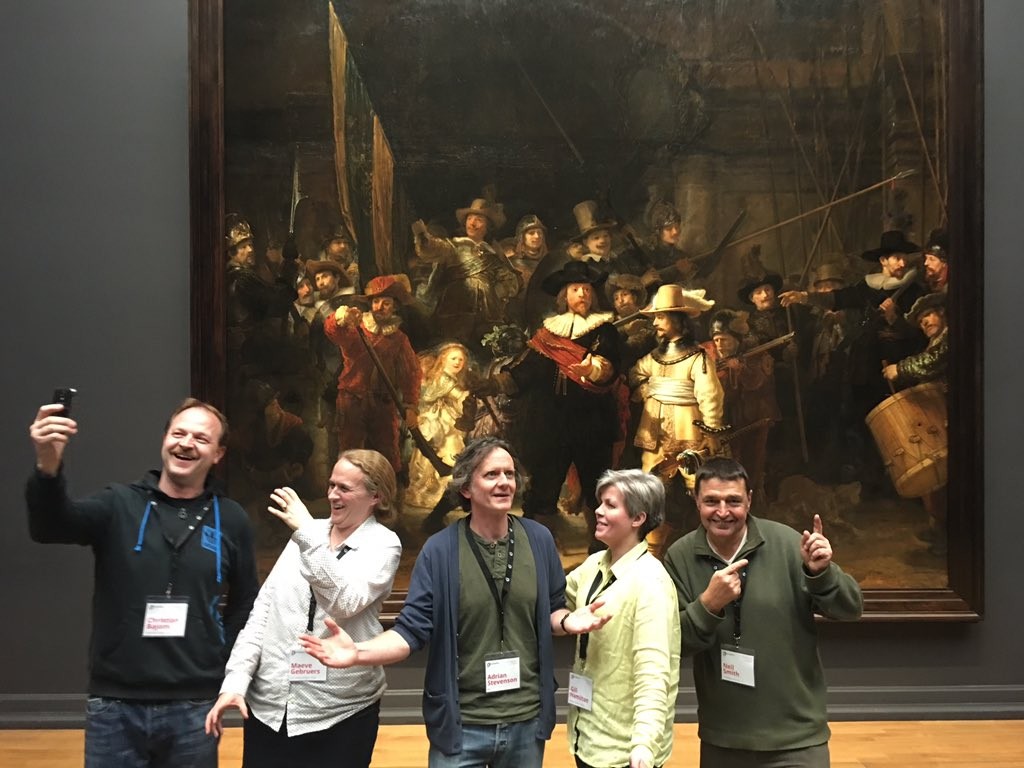Firstly, an apology to those who commented. I was on a temporary machine for a while and didn’t get the notifications to approve the comments. I really appreciate feedback! And we need to think about this whole topic as an archive community.
Secondly, I wanted to pick up on some comments:
“If cataloguing archivists have access to a central pot of name authorities we are more likely to spot and re-use existing authority entries. So if one archivist identified Elizabeth Roberts 1790-1865 (artist) with a little potted biography which placed her in Penge, then a later archivist finding material from Lizzie Roberts in Penge in 1850s is much more likely to put 2 and 2 together manually”
In fact, one of the potential developments from the work we are doing is an interface specifically for cataloguers. The whole issue of ‘match’, ‘probable’ and ‘possible’ is tricky to present to end users, but relatively easy to present to cataloguers to help with creating names that will successfully be connected. So, we are bearing that in mind as a future development.
“When I looked at the list of names used in this article I thought ‘someone just doesn’t know what to include to properly describe a name”
Yes…I think that sometimes, when I am thinking about how to reconcile the massive variations and how to work with the lack of structure. But then I remember what it was like (when I was a proper archivist) to catalogue within time constraints. And I also remember that I am someone who spends half my life thinking about data! In addition, the point is that with archives it is perfectly valid to enter a name such as ‘Julia (fl 1976)’ because that is what you get from the item you are cataloguing, and nothing more. Maybe you could undertake research to find out who that it, but that would extend the time it takes to catalogue by days, if not weeks and months. For a researcher, this might jog something in the mind and lead to a connection being made. Something is better than nothing. For me, the entries that are rather more frustrating are names such as ‘various’ or ‘Author: various’, or ‘James MacAllister and various’ because these just aren’t names. However, many of these entries were probably created in a time when semantically structured data was not so important.
“The other way of dealing with this is to leave the final decision up to the end-user.”
Yes, this is a fair point. In our current thinking, the idea is that we have levels of confidence that we present to the user, and that allows them to make the decision. But we still need to think carefully about how to do this in a way that most clearly conveys meaning. The most difficult thing is to convey that even though you have linked several collection descriptions to one name, other name strings may also be a match. But at the end of the day, there is always the issue that decisions you make around the navigation and options provided to end users means they are likely to exclude some relevant results. A subject search will exclude any archives not indexed with that subject. Do you therefore dispense with a subject search? (More in this in future posts, as machine learning may present us with new tools to create subject entries).
Since my last post we actually hit the point of ‘blimey, this is just too difficult’. We really weren’t sure we were going to make this work, given the tremendous variations and, in particular, the lack of structure.
However, we have hacked our way through the undergrowth to create a path that I think will fulfil many of our aims. There is so much I could say, if I got into the detail of this, but I will spare you too much discussion around EAD and JSON structure!
A good part of the last few weeks from my point of view has been clarifying the thinking around what is required when processing names. I came up with the idea of the ‘4 pillars of names’.
- Matching
This refers to comparing and grouping names.
Matching does not require us to know if it is a person or an organisation or to know anything about meaning at all. It is simply a process to group names. So, ‘D J MacDonald’ could be a company or a person. The question is, does that match ‘David John MacDonald’ or ‘D J MacDonald, manufacturers, Carlisle’?
Matching is therefore also about levels of confidence. It is about saying ‘D J MacDonald b.1932’ is the same as ‘D MacDonald b.1932’….or not.
Matching may also mean matching a creator name and an index term within a record. For more on this, see below.
2. Meaning
Name meaning is about whether it is a personal, corporate or family name. Many creator names are just ‘creator’. There is no tagging to distinguish the type. Index terms have to have a type, but matching them up to creator name is not always easy. See more on that below.
3. Search behaviour
What happens when the user clicks on the name? Previous posts have presented our ideas for this. Whilst we are not yet ready to develop an end user interface, the options that are available to us for display are necessarily constrained by how we process the data. So we do need to think about this now.
4. Display
How we display a name record, or a name page. Again, not something we are focussing on now, other than to think about the sorts of features that we want to include.
* * *
Our discussions have been characterised by ‘one step forwards two steps backwards’, which can feel a little dispiriting. But we believe we have now sorted out the approach we need to take. I have spent a lot of time working collaboratively with Rob Tice from Knowledge Integration, unpicking the (many and varied) challenges in the data and as a result we’ve agreed an approach that we believe will produce the data that we want.
So, this again consists of 4 parts – a 4-step process that covers matching and meaning.
- Matching within a collection description
We need to try to match the creator name to the index term, if we have both. This is the first step in the workflow. To do this, the processing needs to identify names within one collection (each name needs to be attached to a collection via a reference).
Taking the description of the Caledonian Railway Company as an example (https://archiveshub.jisc.ac.uk/data/gb248-ugd008/7andugd8/38). The name appears as:
Creator: Caledonian Railway (railway company: 1845-1923: Scotland)
Bioghist: Caledonian Railway
Index term: Caledonian Railway, 1845-1923
We want to create one entry for these names that we take forwards into the de-duplication process. In this case, the names are all marked up as corporate names. But in many cases the creator is not marked up in this way. We need a process to match these entities to say that they are the same. This is about applying matching at the level of one collection, rather than across collections. When you apply it to one collection, you can decide to make more assumptions. For example,
Creator: Dorothy Johnson
Index term: Johnson, Dorothy, 1909-1966, Researcher into theatre history
This creator is not marked up as a personal name. If we worked with these entries in our general de-duplication, so that they were not associated with one particular collection, we could not say they are the same person. Indeed, we could not identify ‘Dorothy Johnson’ as a person, only as a creator. The relationship of these two entries would get lost. But within one collection description, we can make the assumption that they represent the same thing.
If we make this the first step we can remove many of the creator-as-string names from the processing – they will already be matched to a structured index term.
2. Structuring data
This is a process of following rules to structure data. Many names are not structured. PIDs (persistent identifiers) can by-pass this need for consistency, but at present the archive community barely uses recognised identifiers. I have posted previously on name authorities and structure. So, anyway, to introduce a bit of EAD, you might have:
<persname>Florence Nightingale, 1820-1910</persname>
or
<persname><emph altrender=”surname”>Nightingale</emph><emph altrender=”forename”>Florence</emph><emph altrender=”dates”>1820-1910</emph><emph altrender=”epithet”>Reformer of Hospital Nursing</emph></persname>
If we can process the first entry to give the kind of structure you see in the second entry that enables us to carry out de-duplication, and we have a much better chance of matching it to other entries. This is decidedly non-trivial, and we won’t be able to do this for all names.
3. De-Duplication
This is the process outlined in the blog post on de-duplication at scale . Once the other processes are in place, we are in a position to run the de-duplication process, and start to try out different levels of confidence with matching.
A working example: George Bernard Shaw
collection match:
George Bernard Shaw (gb97-photographs)
matches:
Shaw, George Bernard, 1856-1950, author and playwright (gb97-photographs)
structure rules:
apply rule: if it includes YYYY-YYYY and the preceding words include a comma then the first entry is a surname and the second entry is a forename
apply rule: YYYY-YYYY is a date
apply rule: words after YYYY-YYYY are additional information
Creates:
Surname: Shaw
Forename: George Bernard
Dates: 1856-1950
Additional information: author and playwright
de-duplication:
The structured entry matches a name from another description:
Surname: Shaw
Forename: G.B.
Dates: 1856-1950
Additional information: playwright.
*****
So, we are now in the process of implementing this workflow. The current phase of this project will not allow us to complete this work, but it will lay the foundations. Of course, we’ll find other challenges and issues. We still don’t know how successful we will be. There will definitely be names we can’t match and we can’t identify as personal or corporate. But then it is down to how we present the information to the end user.
I called this post ‘A 4 year old in red wellington boots’ because in her comment on the previous blog post Teresa used that as a metaphor for how we can think about data. We need to explore, to play with data, to search and discover, to not mind getting dirty. It is easy to get stressed about not getting everything right; but we need to jump into the puddles and just see what happens!



